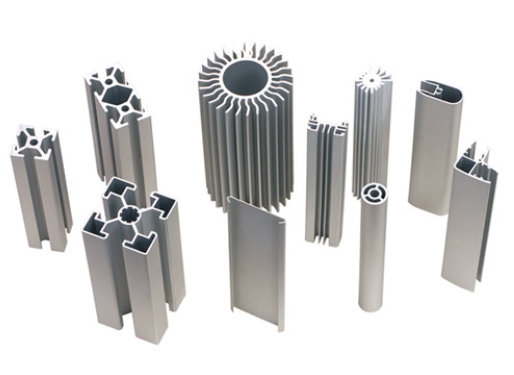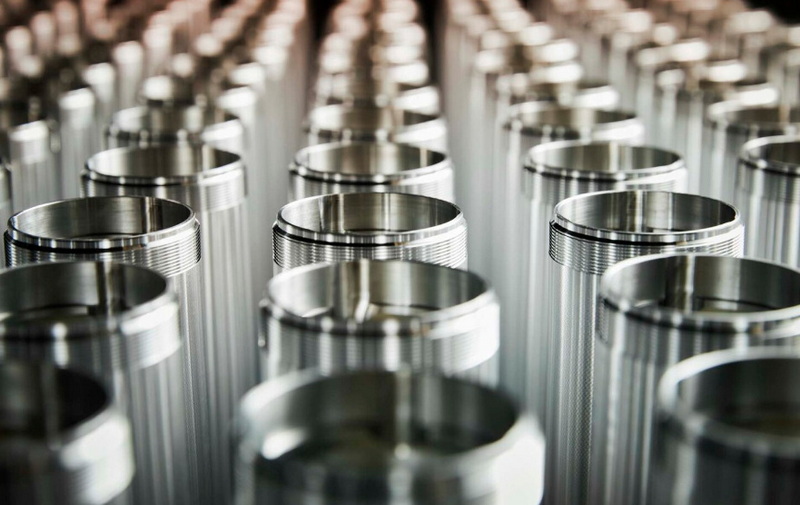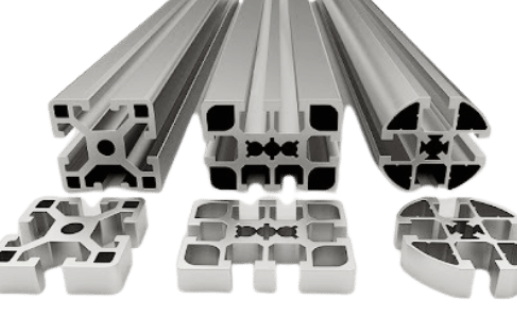Content Menu
● I. Principles of Aluminum Profile Extrusion
● II. Composition of an Aluminum Profile Extrusion Press
● III. Classification of Aluminum Profile Extrusion Methods
● IV. Forward Hot Deformation Extrusion
>> Advantages:
>> Disadvantages:
● V. Types, Properties, and Applications of Hot-Deformed Aluminum Alloys
>> 1. Pure Aluminum (L Series) | International 1000 Series Pure Aluminum
>> 2. Hard Aluminum (Ly Series) | International 2000 (Al-Cu) Series Alloy
>> 3. Rustproof Aluminum (LF Series) | International 3000 (Al-Mn) Series Alloy
>> 4. Special Aluminum (LT Series) | International 4000 (Al-Si) Series Alloy
>> 5. Rustproof Aluminum (LF Series) | International 5000 (Al-Mg) Series Alloy
>> 6. 6000 (Al-Mg-Si) Series Alloy
>> 7. Super-Hard Aluminum (LC Series) | International 7000 (Al-Zn-Mg-Cu) Series High-Strength Aluminum Alloy and Al-Zn-Mg Welding Alloy
>> 8. 8000 (Al-Li) Aluminum-Lithium Series Alloy
I. Principles of Aluminum Profile Extrusion
Aluminum profile extrusion is a plastic forming process that involves applying external force to a metal billet placed inside a container (extrusion barrel), forcing it to flow through a specifically shaped die opening. This process creates products with the desired cross-sectional shape and dimensions.

II. Composition of an Aluminum Profile Extrusion Press
An aluminum profile extrusion press is made up of several essential components:
- Machine base
- Front column frame
- Tension column
- Extrusion barrel
- Electrically controlled hydraulic system
In addition, various accessories such as die holders, ejector pins, scale plates, and sliding plates are equipped to support the extrusion process.
III. Classification of Aluminum Profile Extrusion Methods
Aluminum extrusion methods can be categorized based on various factors, including:
- Type of metal in the extrusion barrel
- Stress and strain state
- Extrusion direction
- Lubrication condition
- Extrusion temperature
- Extrusion speed
- Type or structure of dies and tools
- Shape or quantity of billets
- Shape or quantity of finished products
The common types include:
- Forward extrusion
- Backward (reverse) extrusion (including plane strain, axisymmetric deformation, general three-dimensional deformation)
- Lateral extrusion
- Glass-lubricated extrusion
- Hydrostatic extrusion
- Continuous extrusion
IV. Forward Hot Deformation Extrusion
The majority of hot-deformed aluminum production enterprises adopt forward hot deformation extrusion using specific dies (such as flat dies, conical dies, and porthole dies) to achieve the required profile shapes.
Advantages:
- Simple process flow
- Low equipment requirements
- High metal deformation capability
- Wide range of producible items
- High controllability of aluminum properties
- Production flexibility
- Ease of maintenance and adjustment for dies and tools
Disadvantages:
- High friction between the barrel's inner surface and aluminum, resulting in increased energy consumption
- Friction-induced heating of ingots increases the instability of the profiles
- Reduced efficiency and limited extrusion speed of aluminum alloys
- Accelerated wear and shortened life of extrusion dies
- Inhomogeneous internal and external product structure and properties

V. Types, Properties, and Applications of Hot-Deformed Aluminum Alloys
Hot-deformed aluminum alloys are divided into eight main categories based on performance and application requirements, each with unique properties and uses:
1. Pure Aluminum (L Series) | International 1000 Series Pure Aluminum
- Industrial pure aluminum features excellent machinability, corrosion resistance, surface treatment, and electrical conductivity, but low strength.
- Widely used in household goods, electrical products, pharmaceutical and food packaging, power transmission, and distribution materials.
2. Hard Aluminum (Ly Series) | International 2000 (Al-Cu) Series Alloy
- Used for large structural components and brackets.
- High copper content, but relatively poor corrosion resistance.
3. Rustproof Aluminum (LF Series) | International 3000 (Al-Mn) Series Alloy
- Non-heat-treatable; machinability and corrosion resistance similar to pure aluminum, with improved strength.
- Good weldability.
- Common in everyday products, building materials, and appliances.
4. Special Aluminum (LT Series) | International 4000 (Al-Si) Series Alloy
- Mainly used as welding material.
- Low melting point (575–630°C) and excellent flowability.
5. Rustproof Aluminum (LF Series) | International 5000 (Al-Mg) Series Alloy
- Non-heat-treatable; excellent corrosion resistance, weldability, and surface gloss.
- Varying magnesium content creates different strength grades:
- Low Mg: decorative materials, high-end devices
- Medium Mg: shipbuilding, vehicles, construction materials
- High Mg: welded components for ships, vehicles, chemical plants
6. 6000 (Al-Mg-Si) Series Alloy
- Heat-treatable and hardenable by Mg2Si precipitation.
- Good corrosion resistance, moderate strength, excellent hot workability.
- Widely used as extrusion material; can be strengthened by quenching for higher hardness.
- Extensively adopted in architectural profiles and as a primary industrial material source.

7. Super-Hard Aluminum (LC Series) | International 7000 (Al-Zn-Mg-Cu) Series High-Strength Aluminum Alloy and Al-Zn-Mg Welding Alloy
- High strength, good welding and quenching properties.
- Poor resistance to stress corrosion cracking; requires suitable heat treatment for improvement.
- Former primarily for aircraft and sports equipment.
- Latter for welded structures in railway vehicles.
8. 8000 (Al-Li) Aluminum-Lithium Series Alloy
- Notable for 8–9% lower density than 7000 series, high rigidity, high strength, and lightweight.
- Currently under development; challenges remain in anti-aging performance under complex conditions.
- Main applications: aircraft, missiles, engines, and other military uses.






















